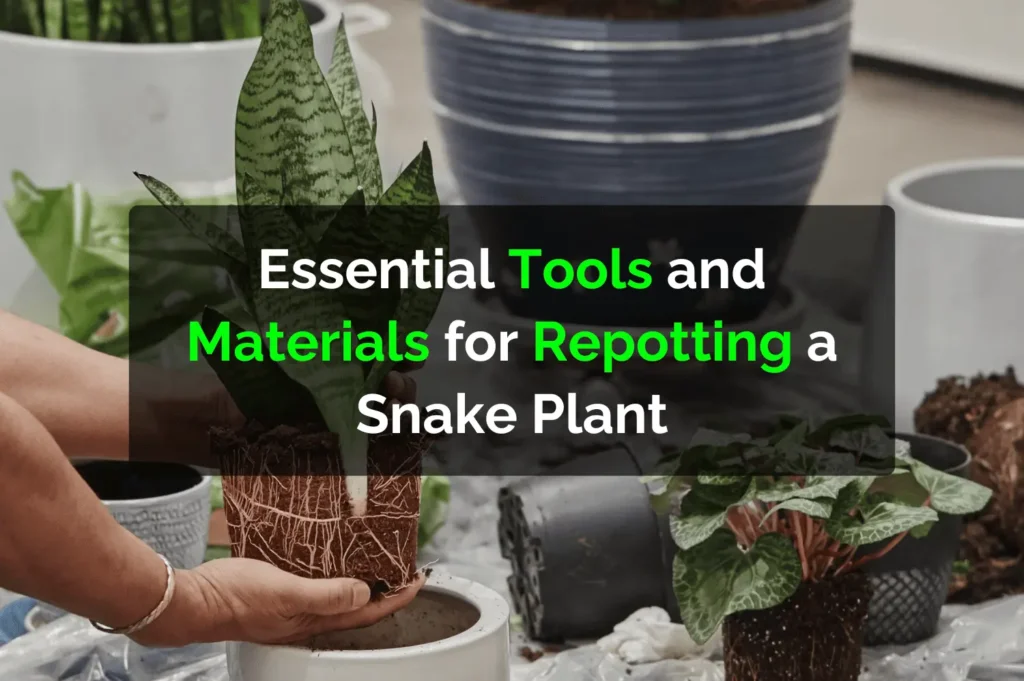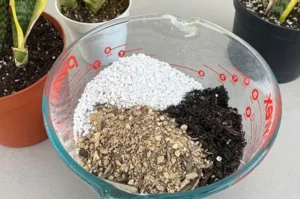Snake plants (also known as Sansevieria or Dracaena trifasciata) are some of the most low-maintenance houseplants, but they do need to be repotted every couple of years to stay healthy and grow well. Repotting a snake plant doesn’t require fancy equipment, but using the right tools and materials can make the job easier and more effective. In this article, we’ll walk you through everything you need to repot your snake plant successfully.
Tools Needed for Repotting a Snake Plant
Having the right tools on hand makes the repotting process clean and easy:
- Gardening gloves to protect your hands from dirt and sharp leaves
- Hand trowel for scooping soil
- Pruning shears or scissors to trim dead or harmed roots
- Potting mat or newspaper to keep your work area clean
- Watering can or spray bottle to moisten the soil after repotting
When and Why You Should Repot a Snake Plant
Repotting your snake plant is important to give it more room to grow and prevent root rot. You should to consider repotting each 2–3 a long time or when you notice: Roots coming out of the drainage holes
- Slow growth despite good care
- Soil that dries out too quickly
- The pot is cracking or bulging
Best Pot for Repotting a Snake Plant
Choosing the right pot is key. Here’s what to look for:
- Size: Select a pot that’s 1–2 inches bigger in breadth than the current one.
- Material: Terracotta or clay pots are ideal because they allow air to circulate and prevent overwatering.
- Drainage: Always use a pot with good drainage holes to avoid root rot.
Soil Mix for Snake Plants
Snake plants need well-draining soil to thrive. A good soil mix includes:
- Cactus or succulent potting mix
- Perlite or pumice for better drainage
- Coarse sand to prevent compacting
You can also make your own mix using 2 parts succulent soil, 1 part perlite, and 1 part sand.
Steps to Repot Your Snake Plant
Follow these simple steps to repot your snake plant:
- Remove the plant gently from its old pot by tipping it sideways.
- Loosen the roots and trim any dead or mushy ones.
- Place fresh soil at the bottom of the new pot.
- Set the plant in the center and fill around it with more soil.
- Press the soil lightly to keep the plant stable.
- Water lightly, then let it sit in a bright, indirect light area.
Extra Tips for a Healthy Snake Plant After Repotting
- Avoid direct sunlight for a few days after repotting.
- Don’t overwater—wait until the top 1–2 inches of soil are dry.
- Keep the plant in a warm environment with good airflow.
- If your plant was rootbound, consider dividing it into two or more plants.
Common Mistakes to Avoid
- Using regular garden soil (too dense and holds too much moisture)
- Choosing a pot that’s as well expansive (can lead to overwatering)
- Not trimming damaged roots before repotting
- Watering too much immediately after repotting
Conclusion
Repotting your snake plant is a simple but important step in keeping it healthy and thriving. With the right tools and materials—like a breathable pot, proper soil mix, and basic gardening tools—you’ll ensure your plant continues to grow beautifully. Avoid common mistakes, follow the right steps, and enjoy your refreshed and happy snake plant!






